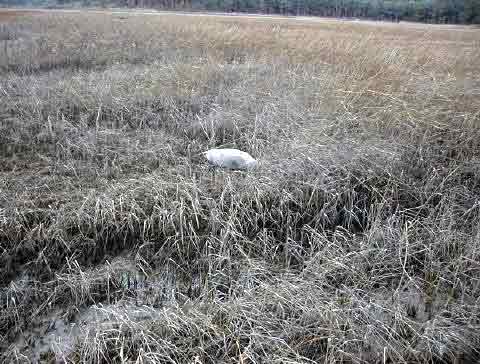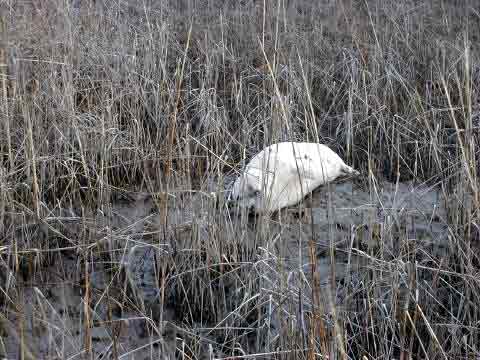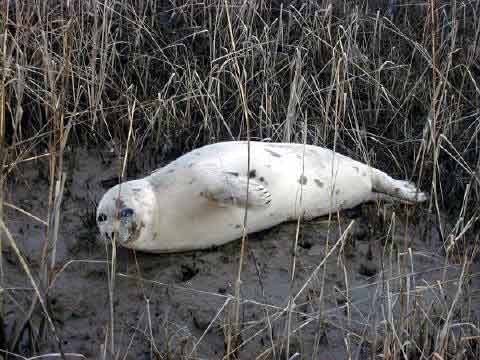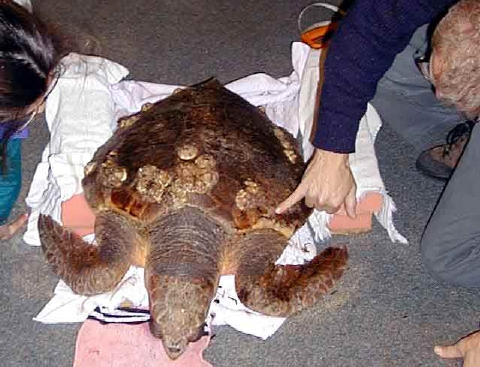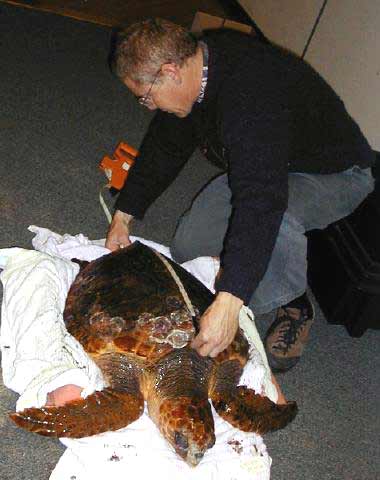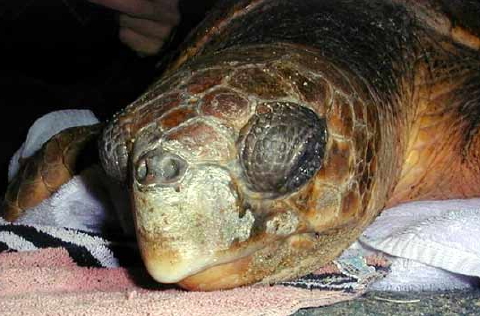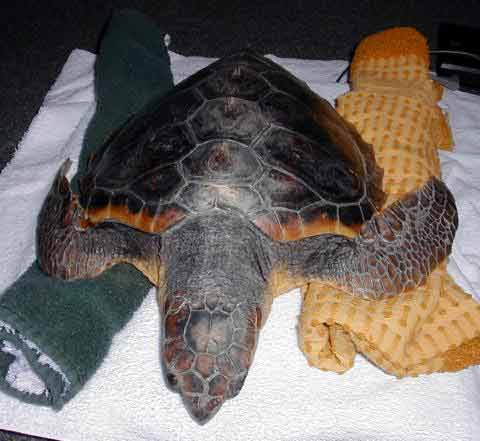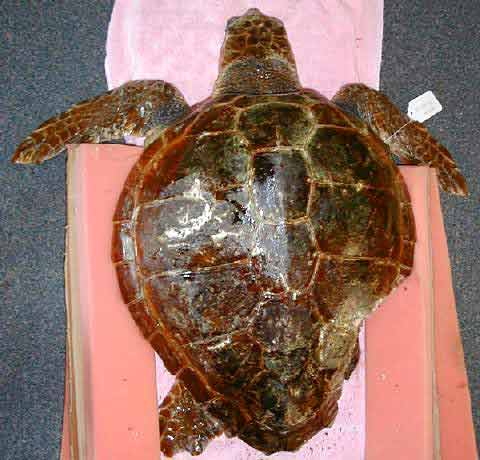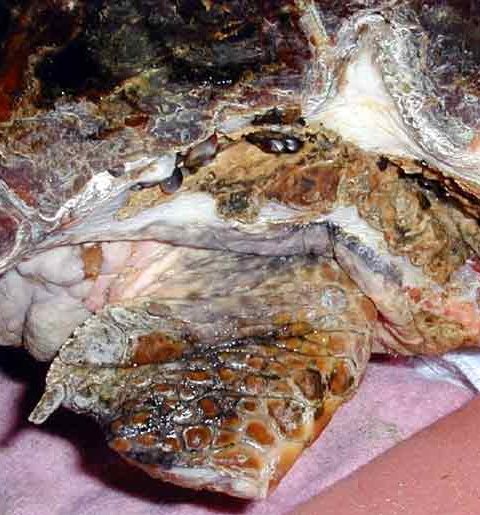Juvenile Harp Seal in Fox Island WMA Marsh
With yesterday evening’s high tide, I returned to the harp seal stranded in the Fox Island marsh. The tide had reached the mud bank were the seal was spotted Saturday morning. I waded out to her locale to see if she had escaped with the tide and couldn’t see her until I was within about ten feet. She hadn’t moved, but remained in the same area, floating head down and under water with only the bump of her back exposed. I was concerned that she might be immobilized by something or other, so I began to approach cautiously.
Well, life is a challenge. At maximum high tide she was floating in about 20 inches of water. I know that because the low wading boots I had foolishly chosen for this trek were 18 inches high. Yep, that’s right — two inches below water level. When I slogged to a spot right over her, she snapped to life, poked her head up, and began to plow through the flooded high marsh grass toward deeper water. I walked with her until the icy tide reached my thighs, at which point I decided the better part of valor was to retreat while I could still feel my toes. She didn’t make it all the way to the navigable creek, but she did maneuver to within a few feet of a nice channel. At the request of the Mammal Stranding Network, I returned Sunday morning to check the area at low tide to see if she had moved out. Unfortunately, this young harp seal remains grounded in the same location as last night.
With head resting in a clump of high grass, she took little notice my approach, just following my movement with her eyes but not lifting her head. Her right eye, which I thought might have been injured, seemed responsive today, although darker and seemingly larger than the left eye.
As I got closer, she panted in shallow breaths, something akin to weak, barely audible barks.
She did lift her head slightly as I circled behind her and walked away. The spot where she lies now is within a foot or two of a creek channel which floods regularly with normal high tides. So, if she desires, there should be no trouble escaping from this section of the marsh when she’s ready to leave. I’ll check on her again tomorrow morning.
